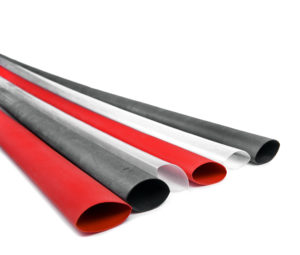 Heat shrink tubing. They’re deceptively simple, but extremely valuable. Someone with a deeper understanding of science may find heat shrink tubing a bit of an oxymoron, though. A lot of objects expand when heated and contract when cooled. Heat shrink tubing does the complete opposite when it’s heated. But, it’s only one of the many wonders of this piece of technology.
Heat shrink tubing. They’re deceptively simple, but extremely valuable. Someone with a deeper understanding of science may find heat shrink tubing a bit of an oxymoron, though. A lot of objects expand when heated and contract when cooled. Heat shrink tubing does the complete opposite when it’s heated. But, it’s only one of the many wonders of this piece of technology.
How Did It Come to Be?
The company Raychem Corporation is credited with the invention of the heat shrink tubing in the late 50s. Its founder, chemical engineer Paul Cook, used radiation chemistry to develop the material. His pioneering work made Raychem the first ever company to develop heat shrink polymers. Other companies like 3M, Sumitomo, and LG, to name a few, merely followed suit.
How Does It Shrink?
Not everything shrinks when it’s heated. Air expands, for one. But, the difference with heat shrinking material lies in the concept of cross-linking. This is a process of exposing a polymer to radiation to create covalent bonds between its atoms. Radiation is able to alter the molecular structure of specific plastics so they wouldn’t melt or flow, no matter how hot it gets.
Current Usage
To say that heat shrink tubing has a lot of uses is an understatement. They can be used for making pencil grips, light switch extensions, and tool handle grips. But, incredibly resourceful individuals can make use of heat shrink tubing in other, extremely clever applications. Got a lot of keys on a single key ring? Those can get pretty noisy. You can silence them by covering each individual key with heat shrink material.
There are numerous ways of heat-shrinking this material. The first answer is pretty obvious: an open flame, though it presents a bit of hazard for inexperienced users. There must be a balance between holding the flame close enough without damaging the material entirely. Of course, the safe way is using tools that blow hot air like heat guns, especially those that are used for stripping paint.

